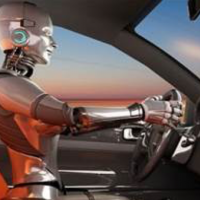Parsimonious and identifiable driver models for online identification and interface adaptation.
The question is not if automated vehicles will be introduced on our roads, but when and how. A major bottleneck is communication and interaction between driver and highly-automated vehicle, especially when drivers need to regain control quickly and unexpectedly. Conventional human-automation interaction (beeps, switches) is inadequate, but academia and industry are struggling to invent better alternatives.
A promising approach is haptic shared control, where drivers can feel (and interact with) the automation’s control activity through forces on the steering wheel or gas pedal. However, an optimal haptic interaction can only be reached if the automation can fully understand the humans behaviour and act accordingly.
Mathematical models of human driver control behavior are critical to the success of driver support systems and driver assessment and profiling. These systems require identification and classification of human behaviour using computational driver models that are sensitive to environmental/human changes, such that the automation can understand the humans timely dynamics and respond accordingly.With each driver having their own driver style (individual driver steering behaviour) and a continuously changing driving environment, ensuring a good mental model match between automation and the human requires online identification , which is far from straightforward.
The driver model and identification technique developed in this project can be validated in vehicles provided by the Dutch Automated Vehicle Initiative and Nissan. Although this project is focused on driving, the techniques developed can also be extended to the aviation and (tele)robotics domains.


